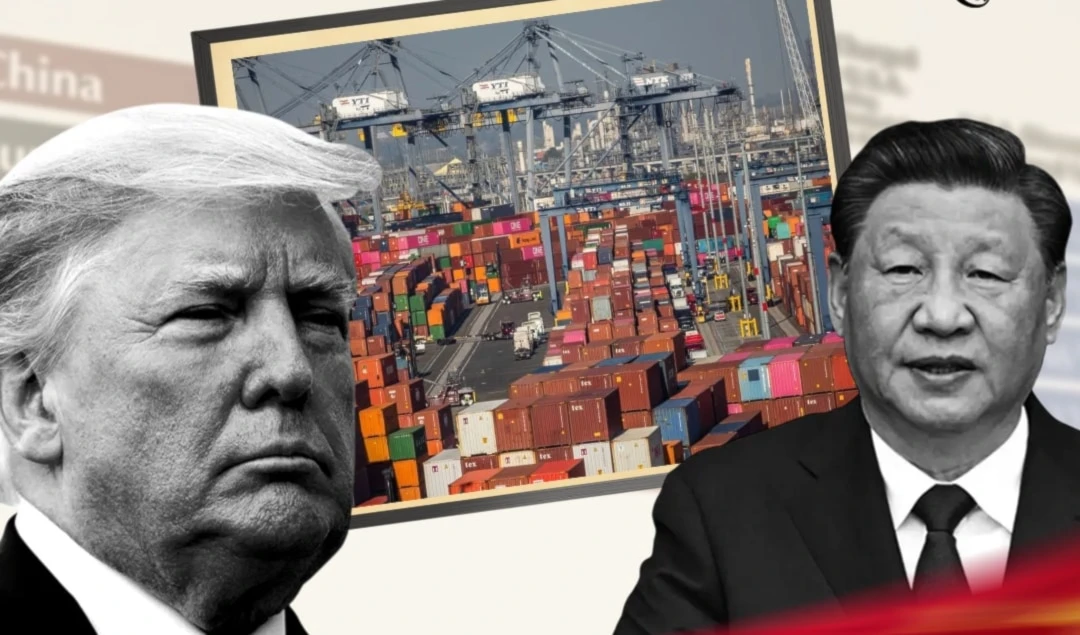Japan ought to think about why it normalized ties with China in 1972
The US touts Japan as its closest ally in Asia, but its actual interests are not in total alignment when it comes to China.
-

Since 1972, Japan has been recognizing the People’s Republic of China (PRC) as China’s only legal representative
Japanese Foreign Minister Yoshimasa Hayashi’s latest China visit was a positive sign that Beijing and Tokyo are finding ways to better manage their conflicts. Hayashi was the first Japanese foreign minister to travel to China in three years. It’s encouraging to see the two sides’ senior diplomats reaffirm that greater communication is needed to ensure a stable relationship despite numerous challenges.
At the end of the day, the two Asian powers have to deal with one another, and peaceful coexistence seems to be the only mutually-beneficial way of doing that. The past usually offers inspiration, even guidance, to the present. This is no exception in the case of China-Japan ties. To regain long-term optimism about their relations, both sides should probably look back to 1972 when they normalized diplomatic ties.
When the normalization reached its 50th anniversary last year, some Japanese and Western media outlets suggested that there was little to celebrate. As a matter of fact, both Japan and China have benefited tremendously from the normalization. First, the normalization reestablished peace between the two sides after decades of aggression, wars, and political isolation. Since 1972, there has been no major military conflict in East Asia, which in many ways should be attributed to the peace between China and Japan.
Secondly, peace has paved the way for prosperity. Trade volume between China and Japan was $357.4 billion in 2022, compared to just around $1 billion in 1972. From 1979 onwards, Japan offered China a huge sum of development assistance such as loans, grants, and technological transfers, which was a key source of propulsion of the early stage of China’s reform and opening-up. In return, Japan is probably one of the biggest beneficiaries of China’s economic rise. In 2021, China contributed more than a third of the global sales of Honda and Nissan, two leading Japanese automakers.
A key spirit of the 1972 normalization was the recognition that peace and friendship should prevail in spite of the differences in the two countries' social and political systems. This was made clear in the Japan-China Joint Communique, the document that witnessed the 1972 normalization. Given the fact that the world was mired in the Cold War at the time, it was a truly remarkable spirit.
Today, however, that very spirit seems to have been marginalized in Tokyo’s China policy. Aware that China’s political system is not recognized by the West as a democracy, Japanese Prime Minister Fumio Kishida has repeatedly called on like-minded nations that share the universal values of democracy, freedom, and rule of law to jointly counter attempts to undermine them. This “us versus them” mindset was quite visible in last year’s NATO Summit in Madrid, where NATO Secretary General Jens Stoltenberg claimed that “China does not share our values”. As the first Japanese leader to attend the summit, Kishida spent quite some time making alarms about China, including drawing parallels between Ukraine and Taiwan.
Since 1972, Japan has been recognizing the People’s Republic of China (PRC) as China’s only legal representative. Back then, Japan made it clear that it fully understands and respects Beijing’s stance that Taiwan is part of the PRC’s territory. With that in mind, Tokyo officials’ repeated rhetoric on Japan’s role in defending Taiwan in recent years is certainly not in line with its pledge made half a century ago.
Both value-based diplomacy and Taiwan are Washington’s cards in a geopolitical game to contain China. Although Japan has its own friction with China over history and territorial disputes, it ought to keep a distance from the US game. Provoking China over Taiwan, which leads to regional tensions, is certainly not in the security interests of Japan. Considering the historical and cultural links between Japan and China, it’s unconvincing to claim that the two countries don’t have shared values. Just like in China, politics in Japan are in fact long dominated by a single political party.
The US touts Japan as its closest ally in Asia, but its actual interests are not in total alignment when it comes to China. An economically strong China is perceived by the US as a threat to its global dominance. This is why the Trump administration launched a trade and tech war against China, which has in many ways continued under the Biden administration. Japan, by comparison, is more interested in pursuing free trade with China. This is why both China and Japan are members of the Regional Comprehensive Economic Partnership. So, it’s questionable that Japan’s China policy should be defined by the US.
If Japan joins a US game against China without reservation, it will in effect end up helping the US maintain its hegemony in the Asia Pacific region. In 1972, Japan and China jointly declared that they shall not seek hegemony in the region, and both countries would oppose any country that seeks to establish hegemony in this manner. Japan needs to refrain from actions that might raise questions about whether Tokyo remains committed to honoring that declaration.
Indeed, it’s challenging for Japan’s China policy to steer clear of US influence. In many cases, it takes a lot of courage for politicians to do something genuinely good for their country and people. In 1972, the then Japanese Prime Minister Kakuei Tanaka feared for his life when he flew to Beijing for the normalization talks with his Chinese counterpart Zhou Enlai. He told his daughter that he would resign if his mission failed, as opposition to his trip was so fierce in Japan. From a historical perspective, however, Tanaka probably made one of the most significant diplomatic trips in Asia in the 20th century. For politicians today, there’s a lot to inherit from Tanaka’s legacy.

 Ding Heng
Ding Heng
 6 Min Read
6 Min Read











